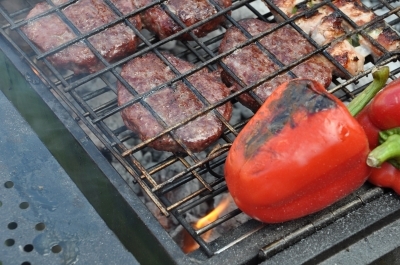Getting a Steak Exactly Right Every Time

 Plenty of backyard chefs are happy to deliver a black and superior gas bbq blue steak, and many more are perfectly capable of turning even a prime cut into something that resembles shoe leather. Getting a steak just right, on the other hand, is a skill that far fewer self-professed masters of the grill have developed. In fact, though, just taking note of a few simple barbecue tips can make it far easier to turn out a steak to any desired level of finish.
Plenty of backyard chefs are happy to deliver a black and superior gas bbq blue steak, and many more are perfectly capable of turning even a prime cut into something that resembles shoe leather. Getting a steak just right, on the other hand, is a skill that far fewer self-professed masters of the grill have developed. In fact, though, just taking note of a few simple barbecue tips can make it far easier to turn out a steak to any desired level of finish.
One of the most basic of these is that allowing steaks to warm up before cooking them usually produces better results. Especially for steaks of over an inch in thickness, time spent on the counter or otherwise coming up to temperature will allow for a more even cooking process. That results in juicier, more flavorful steaks in the end, regardless of whether the steak is to be served rare or well-done.

Another important thing to realize is that salt can do more than just season the exterior of a steak. In fact, salting a steak well as soon as it is pulled from the refrigerator can be a good way of improving the end results. Salt applied early on has the same effect that a brine does for chicken or pork, helping to keep the natural juices within.
Producing truly top of the line bbq, of course, requires plenty of skill when it comes to actually cooking, too. For those who do their backyard cooking on an imperial gas grill or similar device, it can be quite easy to cook a steak perfectly, every last time.
Usually, this will mean heating one side of the grill to the maximum extent possible, while leaving the other side turned down low or even entirely off. The warmed-up steaks should then be grilled for about two minutes per side, with a close eye to the development of charring being a key requirement.
Once they have taken on the desired level of color, the steaks should then be transferred to the cool side of the grill and the grill's top closed. How long they need to remain there will depend on many things, but will typically not amount to more than a few minutes at most.
This part of the process, in fact, is where experience becomes most important. Still, whether on the best gas grill from broil king or a bargain-bin special, most chefs can quickly get a feel for how fast the subsequent cooking will go. Finishing up at lower temperatures makes the window for perfection much larger, to the delight of many who have tried this approach.
![superior gas bbq]() superior gas bbq
superior gas bbq

 Plenty of backyard chefs are happy to deliver a black and
Plenty of backyard chefs are happy to deliver a black and